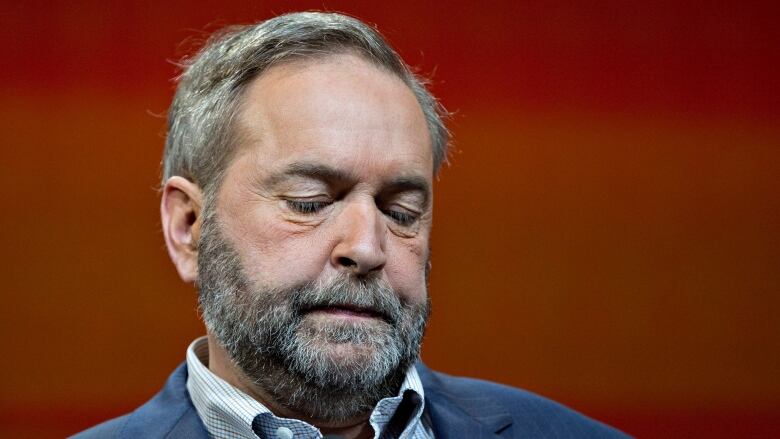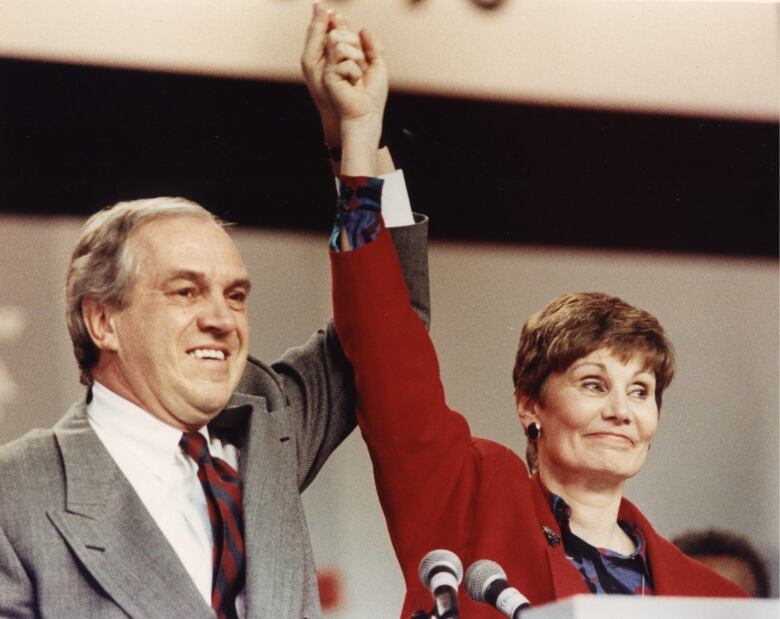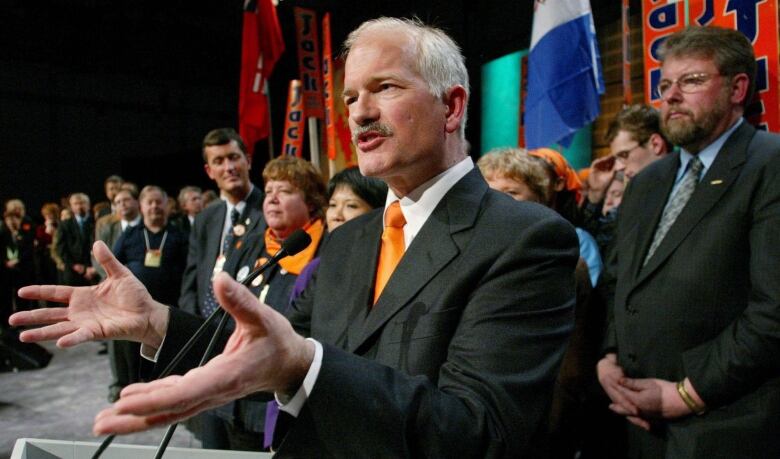Despite 2015 defeat, NDP in better spot now than during most of party's past leadership races
Only during the 1989 and 2012 NDP leadership races was party polling better than in today's contest

The New Democrats failed in theirbid for government in 2015 and have struggled to spark enthusiasmfor their leadership race outside of their existing base, but the party is still more popular today than it was in most of its past leadership contests going back to its founding in 1961.
TheNDP'stop job might not be the glittering prize that it was in 2012, when the New Democrats played the role of the Official Opposition for the first and only time in history. The death of JackLaytonhad made the leadership of a party on the upswing unexpectedly available and the contestants who stepped forward to fill the void were auditioning for the role of Canada's next prime minister.
- Jagmeet Singh tops NDP leadership endorsements
- Federal Poll Tracker: Check out the latest numbers
After a disappointing election result in 2015 which relegated the New Democrats back to their traditional spot in the back corner of the House of Commons, the party's leadership might not seem as appealing today.
This could be part of the reason that popular New Democrats like Nathan Cullen, Megan Leslie and Alexandre Boulericedecided to sit on the sidelines.
But with an average support of 17 per cent in the polls over the last three months, the party is actually in the third-best position it has been out of the eight times that its members have been asked to choose a new leader. And its caucus, at 44 MPs, is the second-largest it has ever been at the time of a leadership contest.
By comparison, when the party was first formed out of an agreement between the Canadian Labour Congress and the Co-operative Commonwealth Federation (CCF) in 1961, its prospects were not nearly as bright.
Looking for a breakthrough
In the run-up to the selection of Tommy Douglas as the first leader of the NDP, the CCF was polling at just 10 per cent support (polling numbers in this article are derived from an average of polls conducted three to six months before the leadership vote). The party had just nine seats in the House of Commons.
It also ranked in third place while John Diefenbaker's governing Progressive Conservatives led in the polls 31 points ahead. At the moment, the NDP trails Justin Trudeau's Liberals by 23 points.

By 1971, the NDP was only slightly more popular. It had improved its representation in the House to 23 MPs, but was not much further ahead in the polls. When David Lewis was vying for the party's leadership in that year's campaign, the NDP was still wallowing at 12 per cent support nationwide 51 points behind Pierre Trudeau's Liberals.
Prospects improved spectacularly in1972, however, when the Liberals were reduced to a minority government that needed the support of Lewis's 31 New Democrats to survive.
By 1975, Trudeau had been returned with a majority and Lewis was out as the NDP's leader. The party had only 16 MPs in the House at the time of the leadership vote, and the party's support was still just 14 per cent. The Liberals were ahead by 39 points.
Ed Broadbent then took over the party's leadership, improving the NDP's standing in three of the next four elections.
1989 and 1995: New heights to new lows
By the end of Broadbent's tenure, the NDP was reaching new heights in its popularity. In the run-up to the 1989 leadership vote, the New Democrats were polling at 25 per cent support, 16 points behind the opposition Liberals and had 43 seats.

Audrey McLaughlin was chosen as leader that year and she led the party to its worst results in the 1993 election. By 1995, the party held just nine seats and was polling at nine per cent nationwide, 45 points behind Jean Chrtien's governing Liberals. Alexa McDonoughtook over, improving the party's performance in the 1997 election but dropping back again in 2000.
2003 and 2012: Towards Official Opposition
When Laytonbeat Bill Blaikie to take over the reins of the NDP in early 2003, the party had 14 seats in the Houseand just 13 per cent support in the polls.
Layton improved the NDP's standing in each of the next four elections, reaching his zenith in 2011 when the NDP captured 103 seats and 30.6 per cent of the national vote.

After he died a few months later, the party counted 102 seats and was polling at about 29 per cent support. Tom Mulcairtook over on a promise of being able to deliver Quebec for the NDP again and form the party's first federal government. For a brief time, the NDP was ahead in the polls and Mulcair was on track to keepthat promise.
Instead, by election day the NDP dropped to 19.7 per cent and 44 seats in the House. But that still ranks as one of the party's best performances in its history and on paper makes the NDP a better prize than it was in any leadership contest besides those of 1989 and 2012.
NDP prospects for gains?
Those two campaigns seem anomalous for the NDP.They were the only two instances when a new NDP leader lost the support the party had at the time of his or her arrival by the subsequent election.
Between her leadership victory and the 1993 election, McLaughlin saw the party's support drop by 18 points. Mulcair saw it fall by nine points between 2012 and 2015. In both occasions, PCs or Conservatives were the incumbent government perhaps an indication that the NDP struggles most when the Tories are in power and voters are in the mood for a change of government.
The five other leaders Douglas, Lewis, Broadbent, McDonough and Layton improved their party's fortunes by an average of four points between the leadership campaign and the next election.

If the New Democrats are able to repeat this feat with their new leader in 2019, increasing their vote share to 21per cent, they would likely contribute significantly to either defeating the Trudeau Liberals or reducing them to minority status shades of 1972, when the current prime minister's father took a step back in his second trip to the polls.
But seven leadership contests represent a small sample size. The next leader of the NDP may not be able to meet such a high bar, as 21per cent would tiethe party's second best performance in its history. Signs that the NDP is on the cusp of such a result its fundraising numbers, for example, havebeen tumbling are not readily apparent.
Nevertheless, those New Democrats lamenting that the party's situation today could have been a lot better should take heart. History shows it could have been a lot worse.













_(720p).jpg)


 OFFICIAL HD MUSIC VIDEO.jpg)
.jpg)



























































































